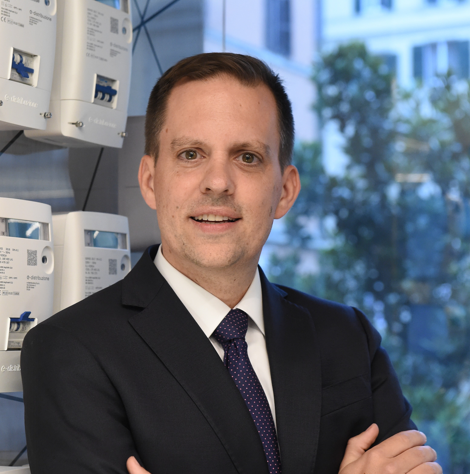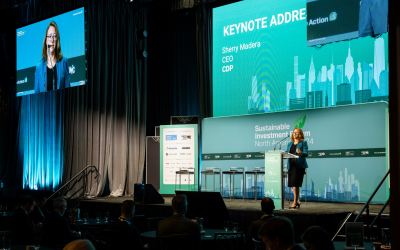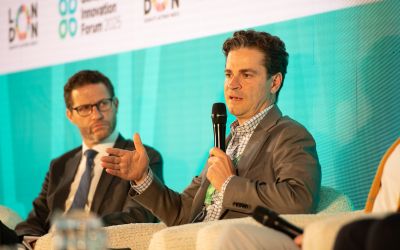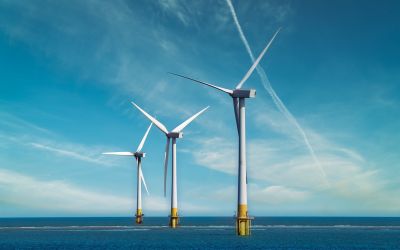Dr. Robert Denda on how Enel is working to engage electricity ecosystem stakeholders
Climate Action caught up with Dr. Robert Denda, Head of Innovation and Industrialisation at Enel Global Infrastructure and Networks, to discuss how Enel is working to engage electricity ecosystem stakeholders for the digital revolution.

Climate Action caught up with Dr. Robert Denda, Head of Innovation and Industrialisation at Enel Global Infrastructure and Networks, to discuss how Enel is working to engage electricity ecosystem stakeholders for the digital revolution.
Enel was a partner at our Energy Transition Summit earlier this year. What are the biggest challenges to the decarbonisation and electrification of our energy system currently?
The widespread availability of energy produced from renewable sources, the development of electric mobility and the increasing electrification of consumption are changing power distribution networks in fundamental ways, pushing them to take a much more central role in energy systems. In particular, decentralized, smaller scale renewable generation alongside the spread of distributed energy resources (DER) such as residential or commercial and industrial (C&I) rooftop photovoltaics (PV), home batteries, as well as electric vehicles are requiring enhanced grid robustness, resiliency and flexibility to meet the needs of an energy world that is undergoing a quick transition.
As a result of these transformations, the distribution grids, that were built over the last 14 decades, will face during the current decade a technological renaissance unlike anything we’ve seen in the past.
Digitalizing power networks will become essential in order to guarantee reliability, quality and continuity of service and to enable the management of new flexibility systems. Moreover, electricity distribution grids will enable the development of many new actors such as demand-side aggregators, charging point operators and prosumers, leading to more open and participatory networks enabling grid users and electricity end customers to became an active player of the energy transition
In this process, distribution network operators need to become true orchestrators of energy systems at local level and deploy investment programs aimed at making grids more robust and reliable also through innovative technologies enhancing network automation and control capabilities.
So, if we really want to transition towards a more productive, efficient and environmental-conscious world, favoring decarbonization and electrification, the distribution grids need to be a priority.
Robert Denda spoke with Vanessa Miler-Fels from Microsoft during his session.
What role does data have in new grid systems, and how will it make them more sustainable?
The efficient management of networks will be enabled by an increasing level of digitalization of the infrastructure, which will require more computing power at the grid edge, enabling a powerful data-driven decision making.
Enel’s grids all over the world enable the execution of over 32 million operations every year. Using cloud computing, Quantum-computing inspired problem formulation and artificial intelligence technologies, we can leverage the information processing real data to improve field operations, reduce response time, increase service quality.
The efficient management of our networks at global level will be enabled by the adoption of a unique and integrated platform operating model that we are rolling out currently, leveraging on an increasing level of infrastructure digitalization.
This new global operating model is our way to get ready to the future role of DSOs in the energy transition: thanks to the power of data, we are improving quality and resiliency, making our operations more efficient, and increasing the flexibility of our grids.
Finally, the digitalization of our processes and technologies, combined with the adoption of circular economy by design principles throughout our entire value chain, will ensure a sustainable energy transition.
Are markets delivering the right signals for investment into power distribution grids, or will the transition depend more strongly on actions/policies from local and national governments?
According to BNEF, at least 14 trillion US dollars must be invested in grids worldwide by 2050 in order to support an evolved power system accommodating electric mobility and other forms of electrification alongside renewables. BNEF estimated that annual power grid investments will need to grow from roughly 235 billion US dollars in 2020 to 636 billion US dollars by 2050, representing a 3.4% year-over-year growth rate. At the same time, by 2050 worldwide investments in distribution will reach 63% of worldwide power grid investments.
Looking specifically at Europe, a recent study (January 2021) by Eurelectric/Deloitte on ‘Distribution Grid investment to Power the Energy Transition’, highlighted the scale of effort by DSOs in order to cope with scenario targets on renewable energy and electrification of consumption. European distribution grids will need investments of 375-425 billion euros until 2030 in order to fit for 2030 EU ambitions for a decarbonized, decentralized and digitalized power system. Most of this investment will go into grid modernization, renewable integration and electrification because the infrastructure is quickly aging. Just consider that 50% of the grids are likely to be over 40 years old by the end of the decade.
We believe that the impact on electricity prices and grid tariffs can remain limited to the extent to which policy makers and regulators provide the right framework conditions to support DSOs in effective investment plans and design proper tariffs in order to stimulate efficiency and flexibility.
In particular, there is a need to evolve the regulatory framework to meet the new needs of both the DSOs and their users, boosting technological innovation and efficient investments to test and evaluate the benefits of new technologies, products and services before scaling them up.
The European DSOs, also through the newly formed EU DSO Entity, have the opportunity to play an active role in the implementation of local flexibility markets, taking advantage of the latest evolution in grid codes and European directives.
How is Enel working to engage electricity end customers with the ‘digital revolution’ that is happening within our grids?
Enel has already installed more than 44 million smart meters on its networks globally, in Argentina, Chile, Colombia, Italy, Peru, Romania and Spain, and we aim to keep on serving more and more grid users and electricity end customers around the world.
This technology is the initial step of the extraordinary grid digitalization process of power grids that will revolutionize the way end customers use electricity and take control over their consumption and production behaviours. A smart grid where bidirectional flow of energy and information between grid users and electricity end customers and distribution grid operators will increase with the energy transition.
Smart meters take electricity end customers empowerment to the next level thanks to advanced communication capabilities with their houses in near real-time. A dedicated communications channel in the meter, also known in Italy as "Chain 2", allows the development and diffusion of commercial solutions dedicated to energy management services and home automation. A wide variety of information can be made available through this channel - not available previously on the first-generation meters – allowing electricity end customers to gain more awareness and understanding of their consumption. This feature will be a strong enabler for the smart energy customers that will take an active role in the energy market. The data and notifications sent by the smart meters to the electricity end customer premises can be shared, if the customer wishes to do so, with third-parties to develop tailored offers and new services like load management, demand-response and energy efficiency support integrated, for instance, with their domotic system. In terms of use cases, this feature can be exploited, for example, for the modulation of the available power used to recharge our electric vehicle based on the consumption measured for the home appliances (and considering the maximum contractual power) or start the washing machine when the meter notifies the activation of the off-peak tariff.
But we should consider grid users and electricity end customers not just as smart consumers but as active participants of the energy ecosystem, able to produce and storage their own energy, increasing bidirectional flow of energy. Data will therefore be crucial to empower these prosumers to become key players of the digital grids.
The Energy Transition Summit was part of our Roadmap to COP26 transition summit series. Many people feel our energy grids do not get the attention or investment they need, how can we bring the decarbonisation and electrification of our grids higher up the global agenda?
The progress towards this new energy paradigm has taken place at all Grid Level, the increasing of hosting capacity of removable energy and the availability to active flexible demand depending of the status of the Grid together with digital solutions, make the electricity network more effective in remote control and near real-time exchange of information with connected Distributed Energy Resources (DERs) keeping the same excellent level of quality of services and resilience of the grid.
The existing cooperation between DSO and TSO with the other actors of the value chainshould be even stronger to accelerate the energy transition. On that sense, Enel has launched the initiative Flexibility lab, with the aim to enhance collaboration with all stakeholders involved in this path: providers of flexibility services, manufacturers of related technologies, energy communities, DSOs and TSOs (Transmission System Operators).The interaction among all players must be carried out in an orchestrated way to obtain a reliable and value accretive local electricity system.
The new flexibility solutions require better integration of the distributed resources into the grid providing support to DSO, other than traditional ancillary services, such as frequency response or reserve services for TSO.
The design of new flexibility services for DSOs purpose, based on new market mechanisms to be implemented, should be pursued to cope with the requirements of the actors involved in the active operation of the distribution system.
DSOs (Distribution System Operators) are going to exploit new flexibility solutions aimed at supporting congestion management, outage prevention or voltage control.
In this context, DSOs will be the neutral facilitator of flexibility services to be provided by owners or aggregators of DERs (such as stationary batteries, solar PV, EV charging station operators, etc.), or by demand response mechanisms.
Thus, collaboration amongst DSOs is fundamental to make distributors' needs understood and to catalyze the opportunities of the different markets. Establishing a continuous dialogue with governments and institutions will contribute to designing the appropriate and dynamic regulatory frameworks required for DSOs to enable the shift towards a net-zero future.






